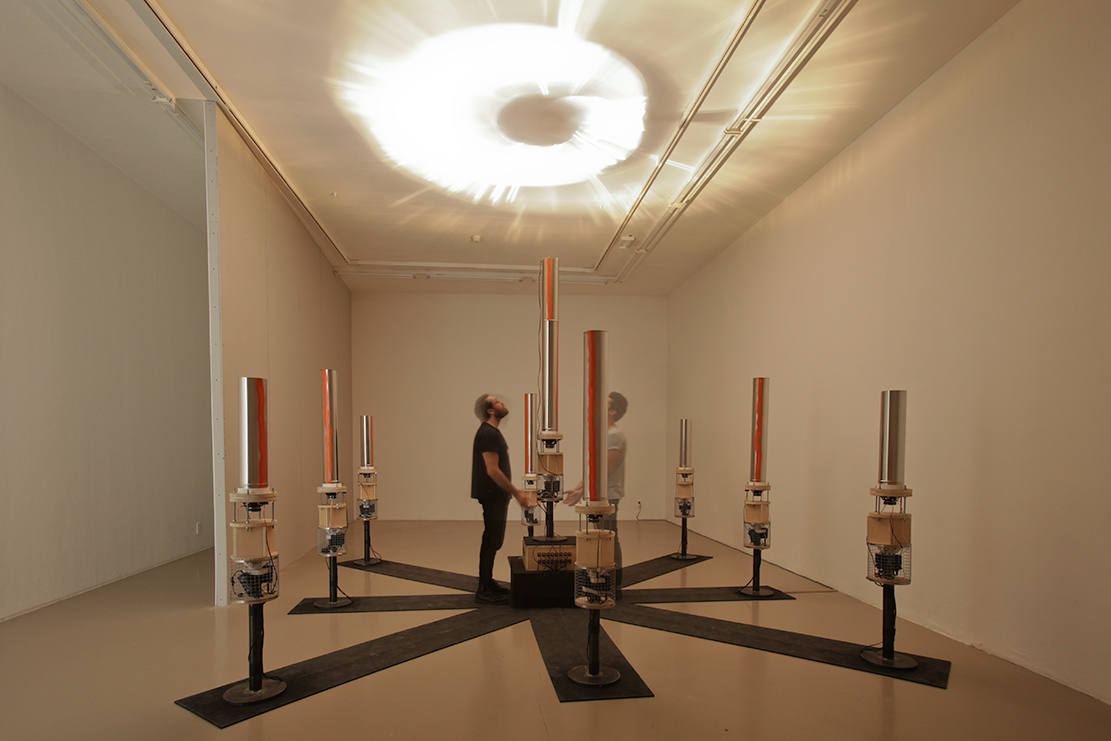
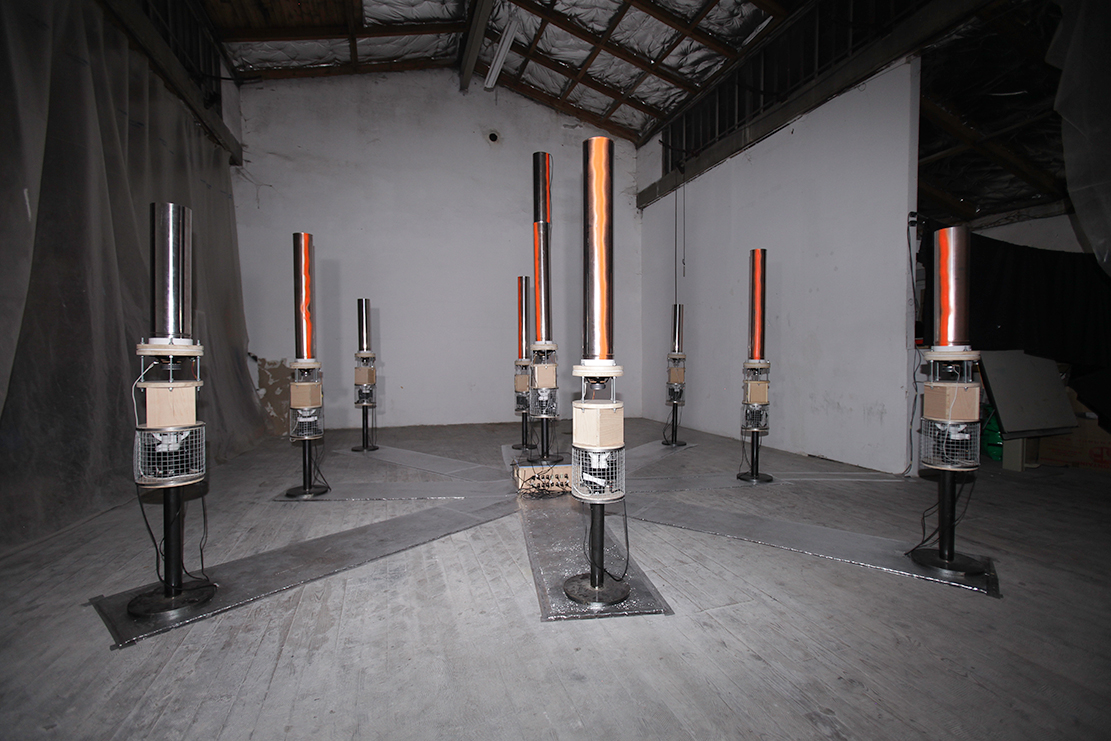
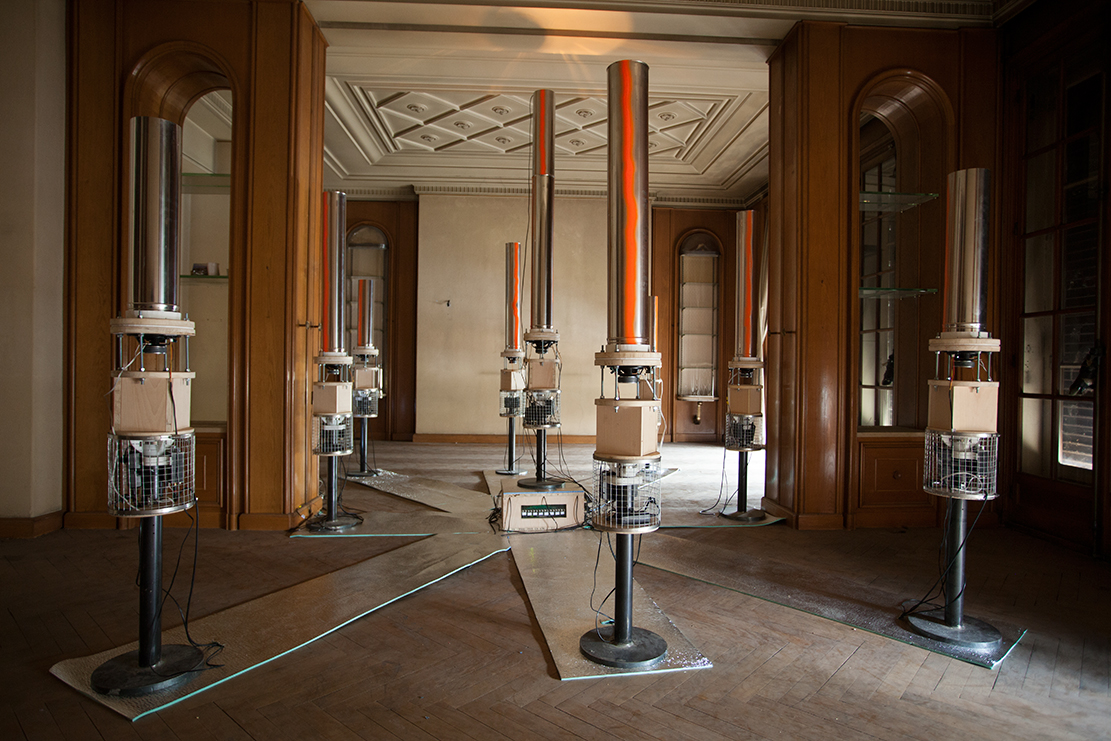
Vahan Soghomonian invite two composers of experimental music and a hypermedia artist on this project.
Matthieu Reynaud and Fabien Ainardi worked on the creation of the sound mechanic, and Raphael de Stael conceived the interactive part of the machine.
Vahan Soghomonian invite: un artiste hypermedia, Raphaël de Staël, à penser et à concevoir la partie interactive. Deux compositeurs de musique expérimentale: Matthieu Reynaud et Fabien Ainardi, à concevoir et imaginer la mécanique sonore de la machine.
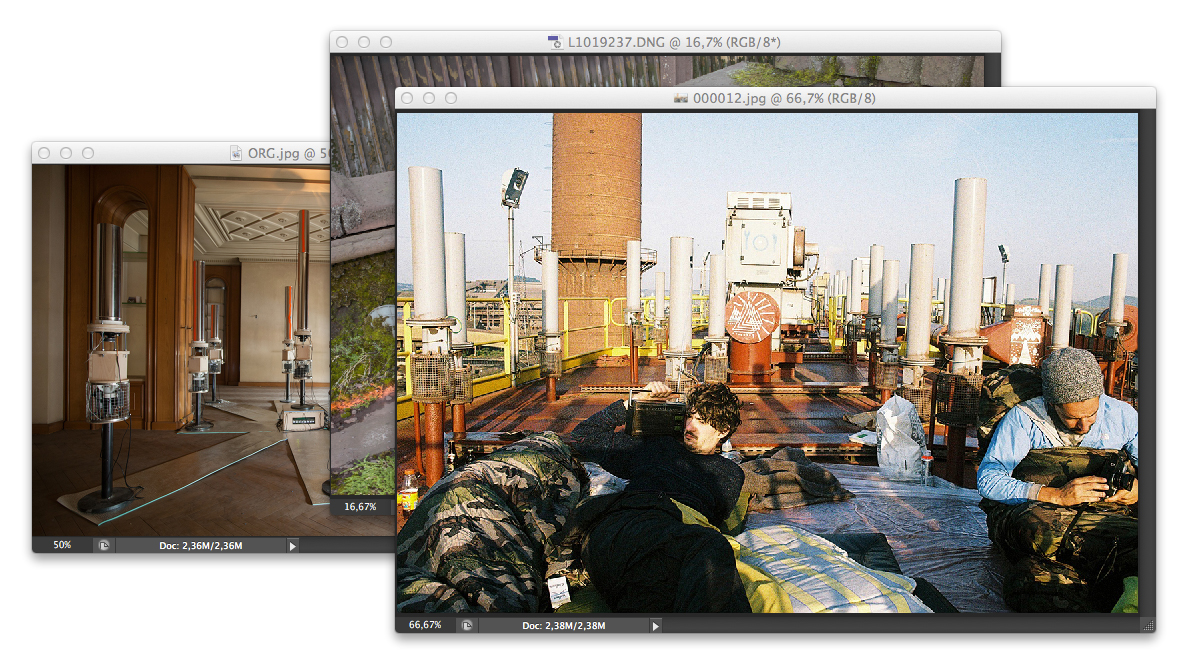
The new assigned function is sound, the whole system constitutes an interactive digital organ.The musical direction we have taken, follows our research on the origin of the organs. Especially, the Pythagorean theory of harmony of the spheres which allows, through a harmonious numerical ratio, to think the cosmos by associating to each planet a note of the scale.
The distance between planet refers to musical intervals, the set creates the celestial music producing an interaction between the elements and all they represent.
The organ is a figure of it, a polyphonic instrument, architectural, for sacred music.
Influenced by current astronomical knowledge, Matthew Reynaud and Fabien Ainardi have established a sound mechanical. The sound turns within the installation, constituting a model of the celestial mechanical; the movement produced in-200 million years are played here in 45 years. Then the musicians composed the planets sound by using their interpretation of Grec mythologies, which are at the source of their identity.
"The sun's music is that of Apollo, the absolute grace, that of Mercury is light and playful while Venus sings the extreme pleasure of melody. March sounds warlike wrath and violence [...]Des objets dé-fonctionnalisés, sous les étoiles, issus de l’architecture industrielle fonctionnelle.
Le projet est de les ouvrir à une nouvelle fonction, avec les puissances de l’imaginaire.
De les re-fonctionnaliser.
La nouvelle fonction attribuée est sonore, l’ensemble constitue un orgue numérique interactif.
La direction musicale que nous avons prise, fait suite à nos recherches sur l’origine des orgues.
Notamment la théorie Pythagoricienne de l’harmonie des sphères, qui permet à travers un rapport numérique harmonieux, de penser le cosmos en associant à chaque planète une note de la gamme.
La distance entre les planètes renvoie aux intervalles musicaux, l’ensemble compose la musique céleste produisant un rapport entre des éléments et l’ensemble qu’ils constituent.
L’orgue en est une figure, un instrument polyphonique, architectural, destiné à la musique sacrée, céleste.
En utilisant les connaissances astronomiques actuelles, Matthieu Reynaud et Fabien Ainardi ont mis en place une mécanique sonore. Les sons tournent dans l’installation constituant une maquette des mécaniques céleste; les mouvements produits en 200 millions d’années se jouent ici en 45 ans. Les musiciens ont ensuite interprété les sons des planètes en appuyant leurs imaginaires sur les mythologies qui sont à l’origine de leur identité.
« La musique du soleil est celle d’Apollon, la grâce absolue, celle de Mercure est légère et enjouée tandis que Vénus chante l’extrême volupté de la mélodie. Mars retentit des foudres guerrières et de la violence [...]» Proust Dominique, L’orgue Cosmique (Paris: Hermann, 2012)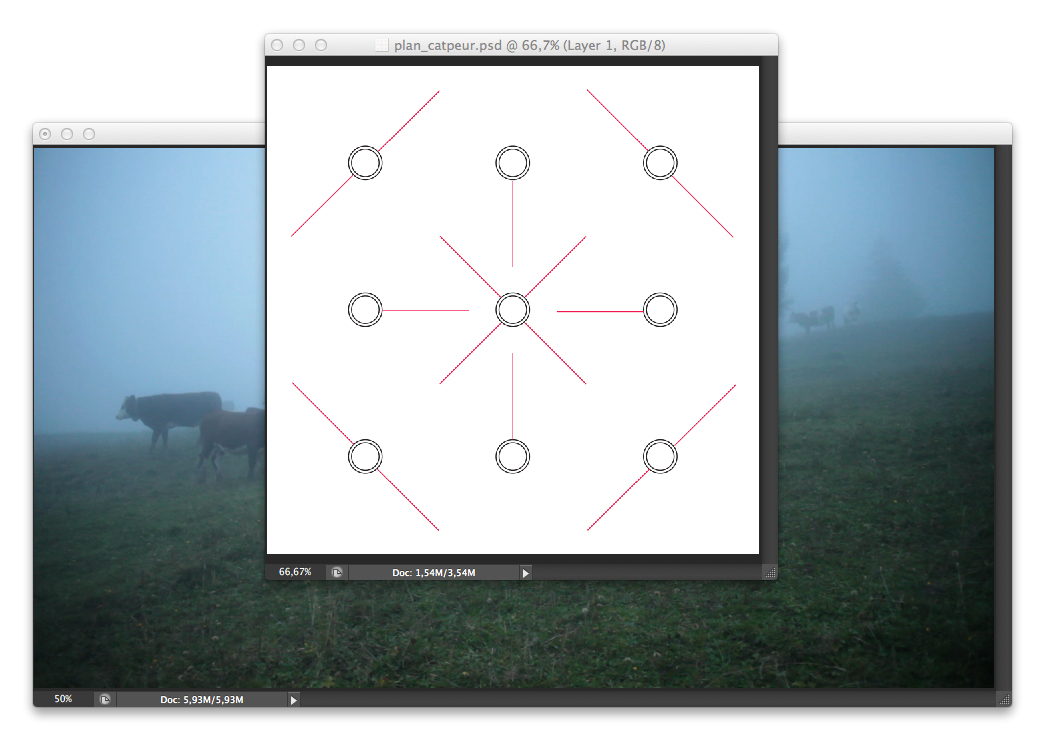
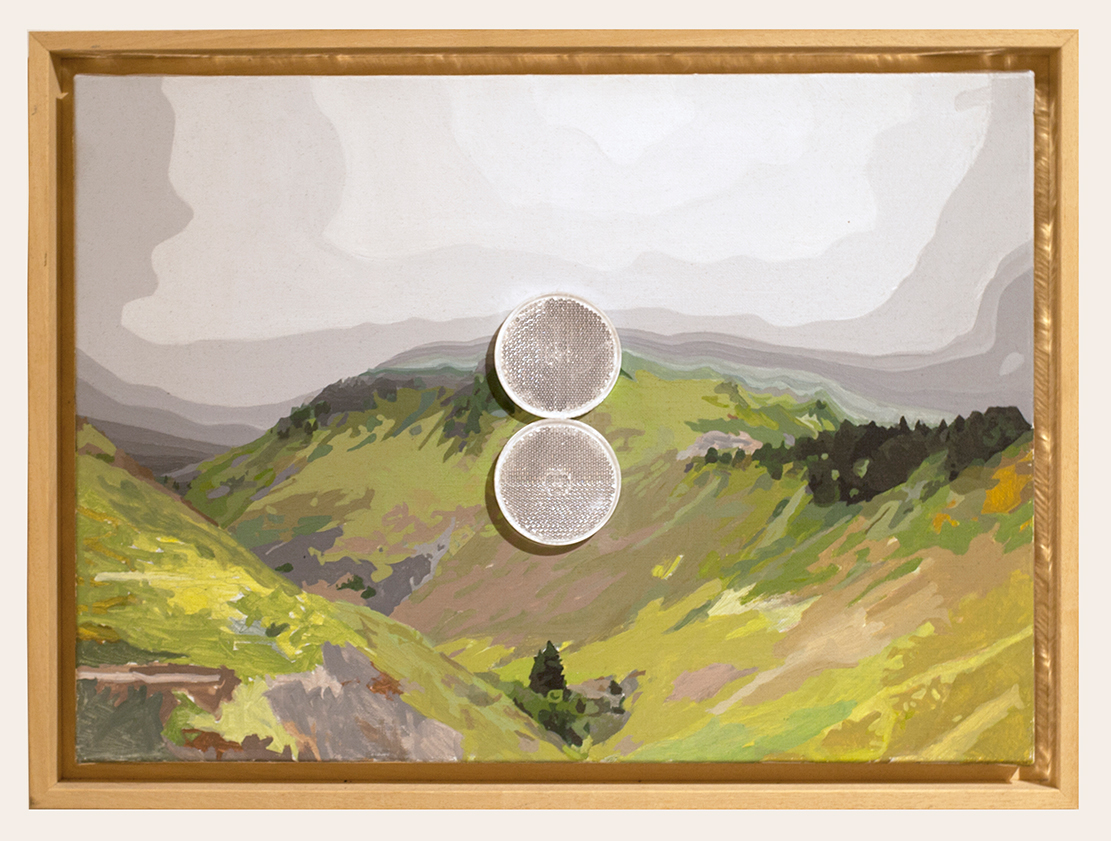
montagne_magique / 2014 / acrilique sur toile / catadiope
It was the experience of perceiving sound produced by movements or activities through a sound tool, in this particular case a bell. By playing within space, it composes a soundscape, which is always in motion. Whether they are going up or down of the mountain, whether they eat or they chew the cud; the sound and the soundscape they compose is dependent to their movement.
Similarly, the ORG is driven by the motions produced within and around it. The keyboard is the space.
Raphael de Stael developed an infrared sensor system that controls the sound software. They are disposed radially within the installation, so as to form a surrounding square surrounding the ensemble.
The machine has a sound harmony default when in single mode, and careful mode when you move inside.
Plastic origin point of this project is located in a factory. This place was producing a specific relationship between man and machine.
The ORG produces a transfer of this relationship towards the sensitive, and invites us to explore it, to be in our imaginary.
Having been four artists to compose a collective intelligence and X number of persons experimenting it allows us to work towards a in "common".
ORG is a system tool that has been produced by thoughts and experiences and, like any tool, can produce thoughts through the experimental.L’ORG est piloté par les déplacements produits à l’intérieur et autour de lui. Le clavier est l’espace, qui devient sensible.
Raphaël de Staël a développé un système de capteurs infrarouges qui pilotent le logiciel de génération du son. Ils sont disposés sur chacun des modules de façon radiale à l’intérieur de l’installation et de manière à former un carré à l’extérieur de l'ensemble.
La machine a une harmonie sonore par défaut quand elle est en mode célibataire et un mode attentif lorsque l’on se déplace à l’intérieur.
Le point d’origine plastique de ce projet se situe dans une usine. Ce lieu produisait un rapport spécifique entre l’homme et la machine.
L’ORG produit un déplacement de ce rapport vers le sensible et nous invite en l’explorant, à être en notre imaginaire.
Avoir été quatre artistes pour composer une intelligence collective, et X personnes à l’expérimenter, permet d’oeuvrer à un «en commun».
ORG est une installation outil qui a été produite par de l’expérience et de la pensée et qui, comme tout outil, peut produire de la pensée au travers de l’expérimental.